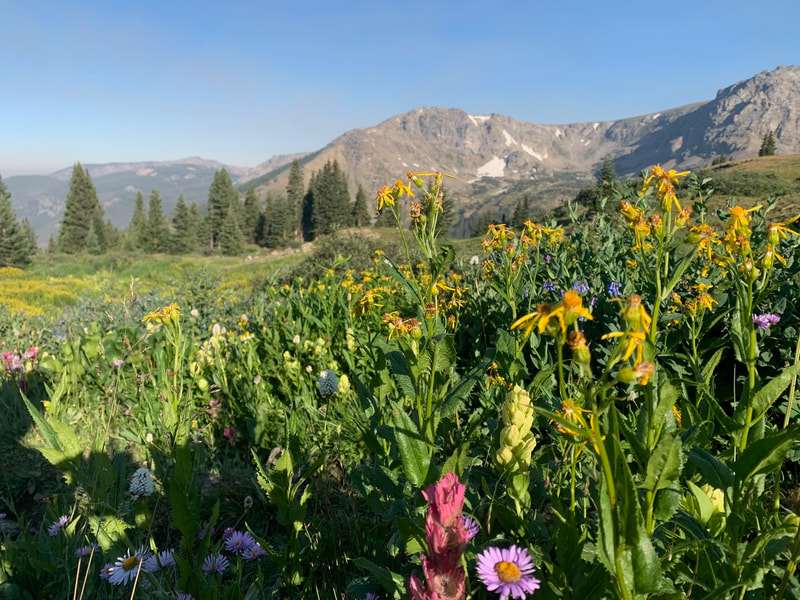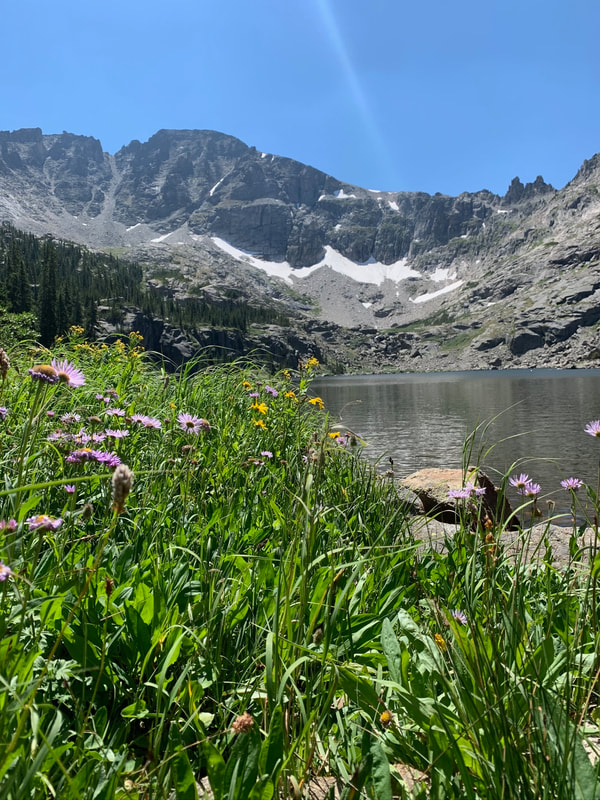|
Guest Blog Post by Flyathlete Adam Pate
Pawnee-Buchanan Loop Distance: 28.13 miles Elevation Gain: 6,898 ft Flyathletes: Ben Wostoupal, Jonathan Neugebauer, and Adam Pate (author) With little training and lots of ambition, we decided to run the Pawnee-Buchanan Loop in the Indian Peaks Wilderness last Sunday (August 9th, 2020) and fish Pawnee Lake along the way. Following standard adventure-planning protocol, we concocted this plan only a few days prior over a couple pints at Upslope Brewery in Boulder, CO. “It’ll be great!” we said. “It’s only slightly longer than a marathon,” conveniently leaving out the fact that we’d also be going up and down the equivalent of 4.5 times the height of Empire State building, completely self-supported, and with all of our fishing gear. We met at the Long Lake Trailhead near Brainard Lake at 5am, finished our coffees, and set out with our headlamps on toward Buchanan Pass. Despite being able to taste the smoke from the forest fires raging in Grand Junction, we were setting a good pace until I got my foot snagged on a root that ripped a 2” hole in the top of my right shoe about a mile and a half into our run. Fortunately, I had some tape in my first-aid kit and was able to patch it up. By now, as the sun started to peak out, our mantra was quickly becoming “If you’re gonna be dumb, you gotta be tough”, so we stashed our headlamps, delayered, and kept cruising up to Buchanan Pass. Upon reaching the pass, we welcomed the strong wind while we chowed some food and slugged our waters. “10 miles down, 18 to go,” we said. The backside of Buchanan Pass was a blast. The trail was well-defined, albeit fast and loose, but the downhill single-track running that this section had to offer was a dream. It began in the high alpine and switch-backed down into beautiful meadows of wildflowers and perennial spring creeks as the headwaters fused together forming Buchanan Creek. Around mile 15 or so, we were running low on water and our bodies began to creak like rusty machines. “We’ve got to be getting close to Pawnee Lake, right?” Jon asked. “So close,” I replied confidently. I was wrong. We still had another 5 or 6 miles of grueling uphill trail to go. Stubbornly refusing to stop and fill our water bottles from the creek that we must have crossed four or five times, we trudged onward as our vision hazed from either dehydration or the ever-present smoke from the forest fires. Finally, at mile 22, there it was. Beautiful and picturesque, it looked like an oasis. If you haven’t been, Pawnee Lake is a remarkable place. It is a sub-alpine lake with conifers and cliff bands lining the Northwest shores and exposed scree and rock outcrops lining the Southeast shores. Needless to say, the stoke was high. We kicked our shoes off immediately and soaked our feet while making absurd dad noises and old man grunts. After guzzling as much water as our bodies could absorb, we got to business. We each tied on a different dry fly and began casting. Within two or three casts each, we all had caught beautiful cutthroats ranging in size from 8-12”. We could’ve fished for hours, but, alas, the climb up Pawnee Pass loomed over us like a specter of eminent pain. “The sooner we do this, the sooner we get back to the car and the cooler full of ice cold beer,” I said, more trying to convince myself than the other two guys. Fueled by pizza, pb&j sandwiches, pickles and coca-cola, we set off on the final climb of the loop—a mile-long, 1,500 ft climb through scree and talus up to Pawnee Pass at 12,500 ft. About half way up, we stopped for a breather and sat down of some boulders. Those boulder felt so comfortable that we could’ve lived there forever. I even began to imagine what ptarmigan would tasted like. It’s basically a mountain chicken, right? After what felt like an eternity, we approached the pass, stopped for an obligatory photo with the sign and made our way down toward Lake Isabelle then to Long Lake. The last few miles to the car felt like a blur, but we ran all of them. After about 11 hours, we had finally made it. We were done.
0 Comments
Leave a Reply. |
Running RiversWe run remote trails. Archives
November 2020
Categories |












 RSS Feed
RSS Feed